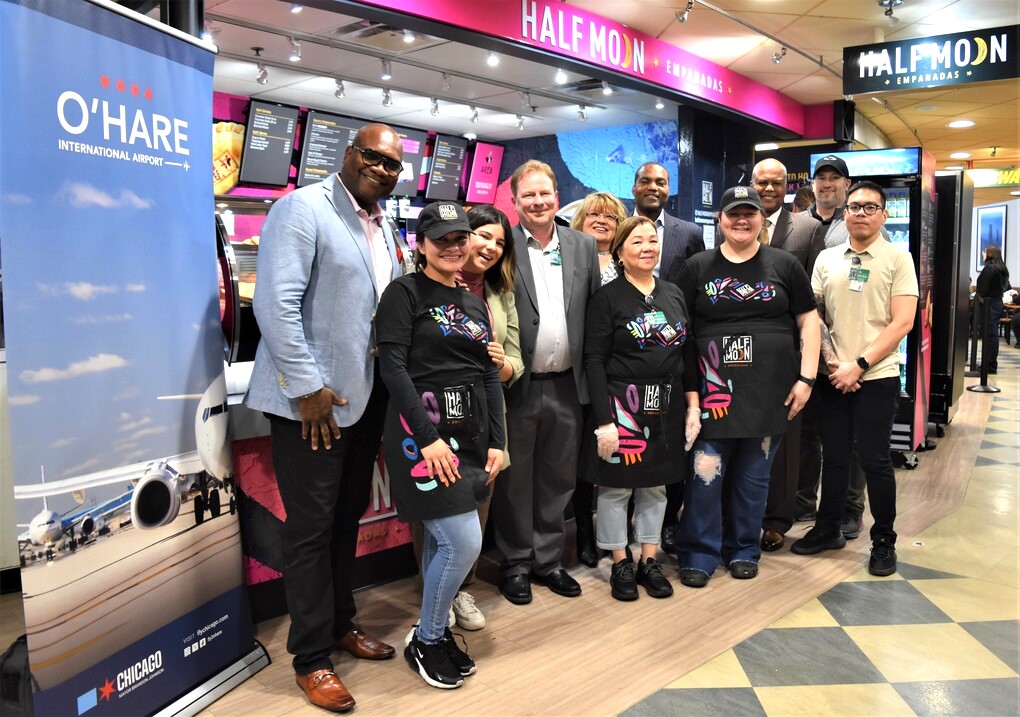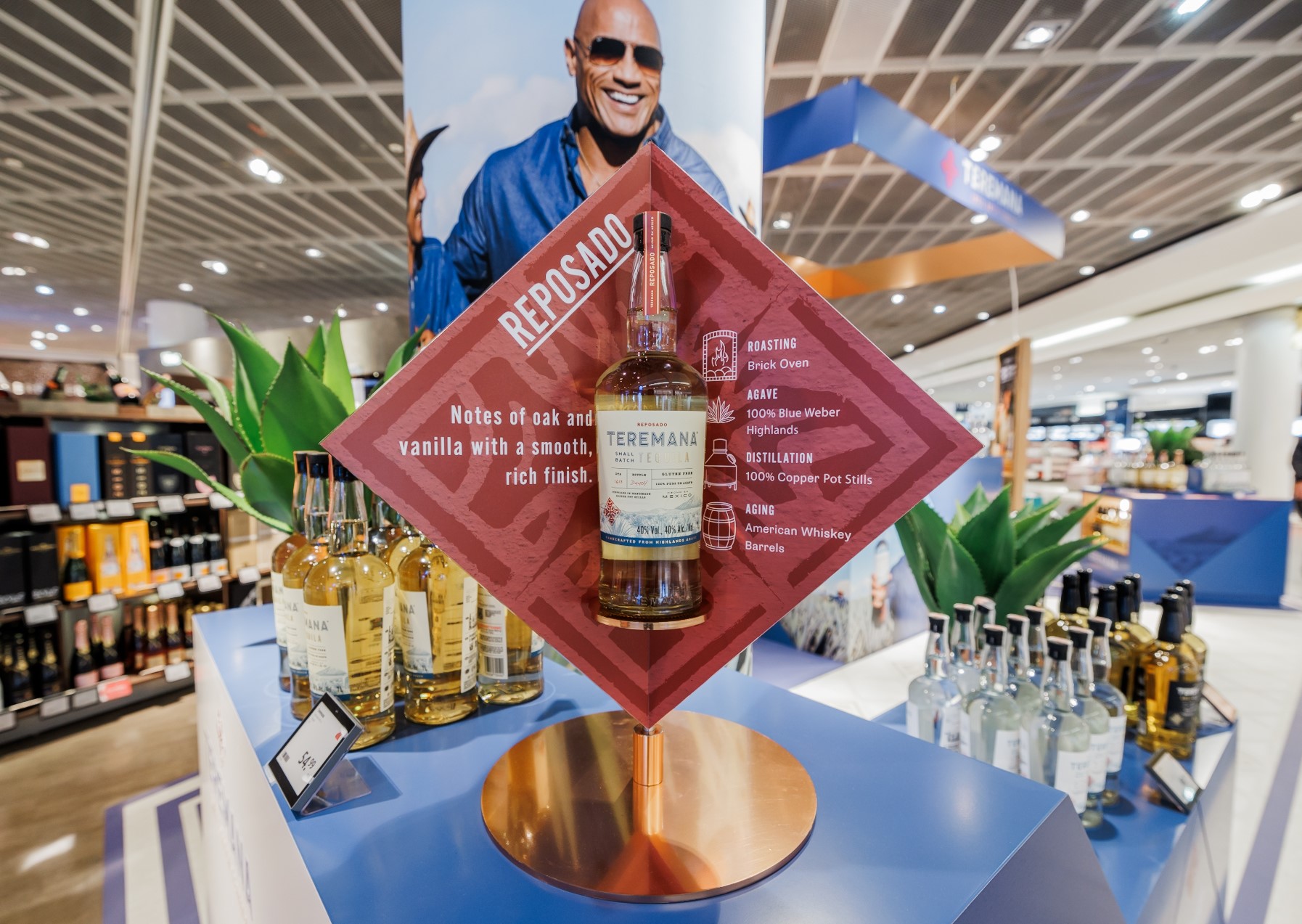INTERNATIONAL. The Moodie Davitt Report’s new reader platform, Moodie Davitt NEXUS, brings you a weekly quickfire summary of (and links) to key stories from the related worlds of travel, retail, luxury, brands and beauty. All have been chosen for their relevance to (or repercussions for) travel retail.
NEXUS will be available on dual platforms, both via The Moodie Davitt Report.com, which enjoys almost five times the monthly web traffic of its nearest rival, and on this weekly e-Newsletter.
1 – Gartner L2
Top 10 Luxury Brands in China

With Chinese consumers expected to make up 40% of all luxury spending by 2024, digital strategies are critical to the fortunes of brands seeking to grow their China and global presence with this critical audience. Gartner L2’s Digital IQ Index: Luxury China unveils the ten brands with the strongest digital presence in the PRC.
Soundbites: Locking in the number one spot in this year’s ranking, Cartier remains high-profile and one of the most mentioned brands across Baidu Index, WeChat Index, and mobile community apps.
For full story click here: https://www.l2inc.com/daily-insights/top-10-luxury-brands-in-china-3
2 – JING DAILY
Mr. Bags x Longchamp: How to Make 5 Million RMB in Just Two Hours
 The Moodie Davitt Report’s information-sharing partner Jing Daily publishes an exclusive (and outstanding) interview with Tao Liang—better known by his social media followers as the handbag blogger Mr. Bags.
The Moodie Davitt Report’s information-sharing partner Jing Daily publishes an exclusive (and outstanding) interview with Tao Liang—better known by his social media followers as the handbag blogger Mr. Bags.
With the power of online influencers growing rapidly in China, luxury brands now have ample opportunity to connect with young Chinese consumers. But when a collaboration is so successful that it breaks sales records, it becomes a lesson for all luxury marketers.
Read the extraordinary revelation that Mr Bags’ Year of the Dog capsule collection released with Longchamp in the run-up to Chinese New Year generated sales of over RMB5 million (US$775,000) in the first two hours. For the first time, the collection was made available both in stores and online while also branching out to 10 countries and regions outside Mainland China.
Soundbites: “We chose to work with a group of young, sweet, and talented people” as it was critical that their chosen influencers represented China’s young fashion crowd, Tao explained.
“Longchamp invited their friends, and I invited mine,” he continued. “Our celebrity friends were super supportive—they posted their pictures with the bags on Weibo, and attracted millions of viewers
“The Mr. Bags capsule collection is never about selling out of all the bags—it is about creating a fantasy for bagfans [what Mr. Bags calls his followers] —a huge undertaking that involves limited-edition bags, an offline event, celebrities, special packaging, and more.”
For full story click here: https://jingdaily.com/mr-bags-longchamp/
3 – FORBES
Why Brandalism Has Become A Luxury Brand’s New Best Friend
 This brilliant article, written in exuberant style by Katie Baron, examines the boom in what she marvellously describes as “off-piste brand behaviour”. Citing recent examples from Tiffany, Louis Vuitton, L’Oréal and (especially) Gucci, Ms Baron argues that subverting or dismantling formerly sacred brand codes is swiftly becoming a “fast-track to modernity”.
This brilliant article, written in exuberant style by Katie Baron, examines the boom in what she marvellously describes as “off-piste brand behaviour”. Citing recent examples from Tiffany, Louis Vuitton, L’Oréal and (especially) Gucci, Ms Baron argues that subverting or dismantling formerly sacred brand codes is swiftly becoming a “fast-track to modernity”.
Read how L’Oréal has experimented with French software plug-in TokyWoky – a live chat tool that lets shoppers converse with one another while browsing online without mediation of any sort, being as candid and cynical as they wish.
Soundbites: To see a brand self-sabotaging its lexicon in the extreme look no further than Italian megabrand and runaway sales success, Gucci. Its Spring/Summer 2018 Guccy series is a collection of accessories where both name and logo have been bastardized with a retro font borrowed officially from Japanese gaming brand, SEGA.
For full story click here: https://www-forbes-com.cdn.ampproject.org/c/s/www.forbes.com/sites/katiebaron/2018/06/04/why-brandalism-has-become-a-luxury-brands-new-best-friend/amp/
5 – THE SEATTLE TIMES
Duty free retailer Dufry sees opportunity as trade war looms
 A good story here from a highly influential title with the largest circulation of any newspaper in the state of Washington and in the Pacific Northwest region. As our industry has long known, hiked local taxes might make consumers unhappy but they’re generally good news for travel retail.
A good story here from a highly influential title with the largest circulation of any newspaper in the state of Washington and in the Pacific Northwest region. As our industry has long known, hiked local taxes might make consumers unhappy but they’re generally good news for travel retail.
Soundbites: As the world frets over a looming trade war, one company sees an opportunity. Dufry, the world’s largest duty-free retailer, would thrive in a more restrictive trade environment, Chief Executive OfficerJulián Díaz said in an interview. That’s because tax-free airport shops could gain a bigger price advantage over other retailers if governments impose new levies on imports.
“We’re not subject to taxes, we’re not subject to duties — if there are taxes and duties at the border, for us it’s better,” Diaz said, adding that he nevertheless hopes openness prevails. “I’m a citizen of the world, and free trade is probably the best thing.”
For full story click here: https://www.seattletimes.com/business/wapoduty-free-retailer-dufry-sees-opportunity-as-trade-war-looms/
5 – IMF BLOG
Economic Preparedness: The Need for Fiscal Space

Staying on the subject of tax – and tax hikes – the IMF Blog (one of our favourite regular reads) recently examined how countries must assess the amount of room in their budgets for increasing spending or cutting taxes.
The IMF calls this ‘Fiscal Space’, and the organisation has developed a new framework for measuring it. How much leeway national policymakers have for increasing spending or cutting taxes has been hard to assess. It is a critical question during periods of economic downturn when the government is asked to stimulate the economy. But it is also an equally important question in a time of cyclical upswing such as we’re now experiencing.
Soundbites: Who has it and who doesn’t
Based on the application of the framework in recent IMF reports, Australia, Germany, the Netherlands, and Sweden are some of the countries with substantial fiscal space. Among other things, this reflects their access to stable and cheap funding from financial markets, healthy public finances, and strong institutions.
At the other end of the spectrum, fiscal space is severely constrained in Brazil, Italy, and Pakistan, for example. In between are countries where fiscal space exists but is not extensive, including China, the Philippines, Thailand, Russia, Saudi Arabia, and the United States. Such countries have some fiscal space because the risks they face to funding or debt sustainability are not severe.
For full story click here: https://blogs.imf.org/2018/06/27/economic-preparedness-the-need-for-fiscal-space/
6 – THE GROCER
Pret launches reusable cup made from bamboo fibre

The Grocer reports how popular food outlet chain Pret A Manger has launched its first reusable cup, made from lightweight bamboo fibre. Customers can purchase the dishwasher safe cup for £10. The move follows Pret’s January initiative to double its reusable cup discount to 50p in January.
One of the hottest topics at the recent Airport Food & Beverage (FAB) Conference & Awards was the heavy use of plastic in our industry. It’s not just confined to grab & go refreshments at airports either; look at the often excessive packaging use for beauty and consumer technology items in particular. Given that travel retail is a sub-sector of such environmentally sensitive ‘parent’ industries as aviation, travel and tourism, shouldn’t we be doing more to curb the use of plastic?
Soundbites: Pret has also pledged to eliminate all unnecessary single-use plastic by 2025. As part of the commitment, it is rolling out paper straws, removing hot drink stoppers and teaspoons, and expanding china cups beyond the current 125 stores.
For full story click here: https://www.thegrocer.co.uk/channels/high-street/pret-launches-reusable-cup-made-from-bamboo-fibre/568417.article
7. NEW ZEALAND HERALD
Is duty free shopping a rip-off? Price comparison reveals it’s more expensive to shop at airports.

This story reports on a study by price comparison website PriceSpy, which showed that only 9 out of 54 products surveyed (including electronics, fragrances, smartphones, watches and cameras) were cheaper in The Loop (ARI) at Auckland Airport or JR/Duty Free at Wellington Airport. Curiously the survey did not cover liquor, tobacco or cosmetics.
In monitoring global mainstream media, The Moodie Davitt Report encounters numerous stories like this each year, particularly in advance of peak holiday seasons. The findings here are nothing new, the tone typically virulent and the methodology at times questionable. We’d like to know, for example, how many fragrance SKUs were surveyed and whether they were like-for-like references before making the claim “Buying perfume duty free at a New Zealand airport works out to cost $30 more than buying the same product online.”
Be that as it may, travel retail does have a problem with price perception, partly due to the fact that much of its historic pricing advantage has been eaten away by a combination of online competition and heavy concession fees. ‘Duty free’ shopping (in reality a combination of duty free, tax free and duty and/or tax paid) still has plenty of attractions. But it cannot compete in certain categories with online retail prices (nor should try to). Perhaps it’s time for travel retailers to focus on what they can rather than can’t offer and major on something like a simple four-point charter, which could look something like this (tweaked according to local conditions):
OUR TRAVEL SHOPPING CHARTER
• Guaranteed original goods
• Full after-sales service
• Fair travel value pricing (spell out those categories that are actually free of duty) – at or below local RRP
• Many products only available here
Soundbites: PriceSpy New Zealand country manager Liisa Matinvesi-Bassett said e-commerce had trumped the savings duty free had historically offered.
“It’s a long-held belief that duty-free shopping is where the best bargains can be found. Clearly, e-commerce has put a firm stop to that,” Matinvesi-Bassett said.
“With stores competing more and more on price, online sites and marketplaces tend to offer the most competitive prices.”












